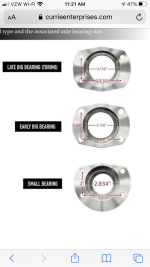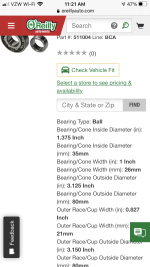Since I last updated this thread I've done quite a bit of work on my rear axle.
I Was able to categorically rule out that the H and J series airlocker side gears are compatible, so the solution was to have the 26 spline side gears broached to 30 spline.
Stock gear:
broached:
The ARB centre needed a very light linish to clear the toyota splines.
At the wheel end, toyota 60 series rear spindles were machined to fit into the tracker bearing pockets (my axle had an additional adapter welded on to suit a Samurai front spindle, but it's irrelevant, the same solution would work without the adapter.
The 60 series hub was machined to fit inside a Samurai/tracker front brake rotor and redrilled to 5 on 5.5", so I retained Suzuki brakes.
axles are Nitro Gear cut-to-length full float LC rears. Ironically, the short side is about 1/2" longer than stock landcruiser, the long side is about 6" shorter. Axles are en route to me now.
Yes, there's custom machining in this solution, but none of the custom work is on wear items or consumables like brake rotors, axles or drive flanges. All service parts are off the shelf landcruiser or suzuki. I was very happy I could buy an off-the-shelf axle rather than having to have custom shafts made, although that's an option through the use of drive flanges and a double splined axle.
I'm aware that LC stuff is likely expensive in the US, locally a complete axle with shafts but no centre ran me $150. I think it's possible to bit LC spindles bare from US vendors to weld into your tubes, which only leaves a hub to purchase, everything is just service parts or readily available aftermarket.
Best of all, this is only adding about 20lb over my current 26 spline setup, and I have the added benefit of larger inner wheel bearings and wider bearing spacing, much better suited to a heavy wheel and tire than the suzuki spindle. I'm pretty confident I won't be able to break a 30 spline 1.31" cromo full float shaft.
You can argue this isn't a "suzuki" axle any more, but it is a suzuki housing, third, suzuki airlocker part # and runs suzuki brakes. It's also Samurai width.
Axles are a week away. I need to buy another airlocker for the front now as this locker was pirated from the front to go in the back.





